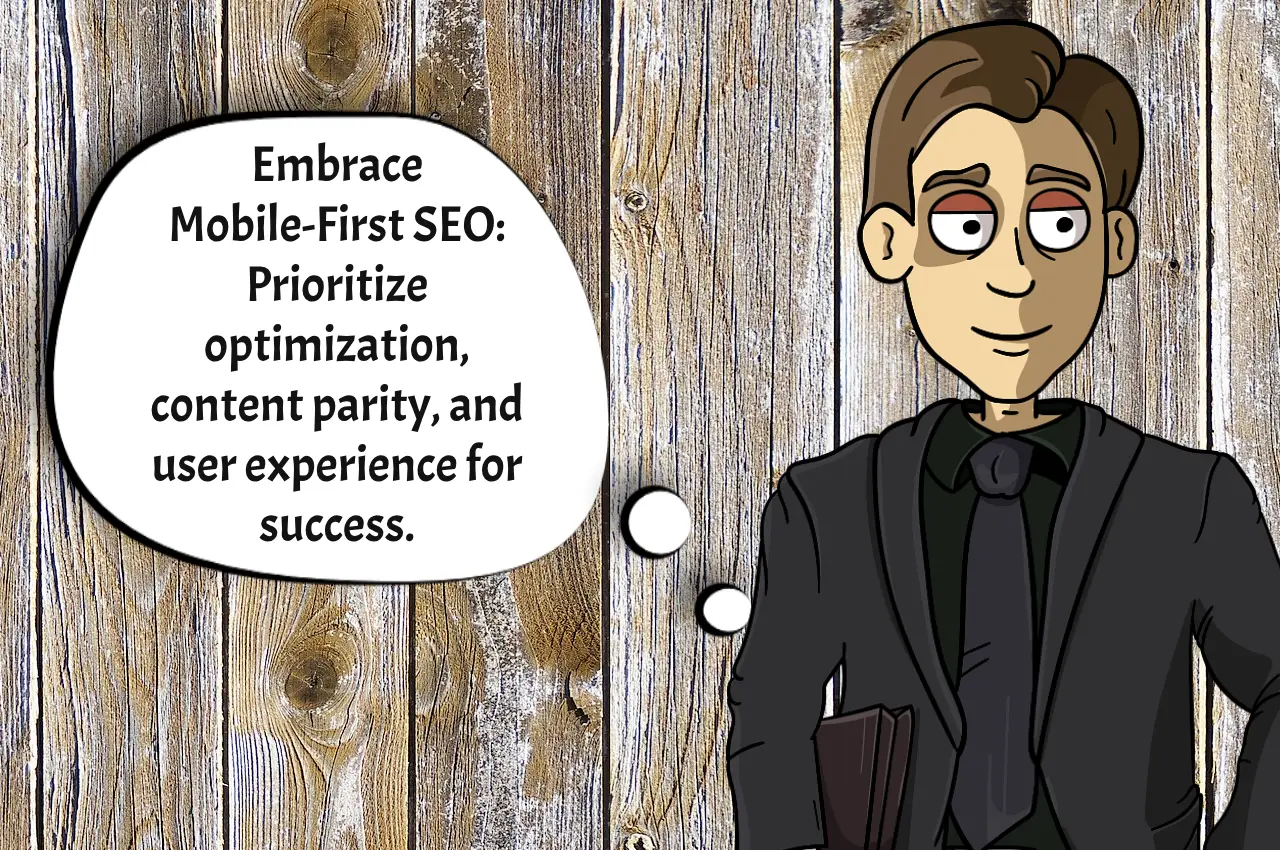In the dynamic realm of SEO, where algorithms are the gatekeepers to online visibility, staying ahead of the curve is imperative. Enter the Mobile-First Index – a paradigm shift that demands our attention. This seismic change is not just another buzzword; it’s a pivotal moment that could redefine your website’s standing in the digital landscape.
Understanding the Mobile-First Index
In essence, the Mobile-First Index is Google’s response to the increasing dominance of mobile devices in online interactions. Traditionally, Google primarily crawled and indexed the desktop version of a website to determine its relevance to user queries. However, with the surge in mobile usage, Google is now prioritizing the mobile version of websites for indexing and ranking.
This shift marks a fundamental change in how search engines perceive and evaluate web content. If your website is not optimized for mobile, you might find yourself slipping down the search engine results pages (SERPs), potentially losing valuable organic traffic.
Implications for SEO
1. Prioritize Mobile Optimization
Your website’s mobile version must be more than an afterthought. It’s now the linchpin for SEO success. Google will assess your site’s mobile responsiveness, loading speed, and overall user experience before considering its desktop counterpart. Failure to meet these criteria can lead to a diminished search ranking.
2. Content Parity is Crucial
While mobile-first doesn’t mean mobile-only, content parity is crucial. Ensure that your mobile and desktop versions have comparable content. Discrepancies could result in Google indexing incomplete information, leading to a skewed representation of your site’s relevance.
3. AMP – Accelerated Mobile Pages
Consider implementing Accelerated Mobile Pages (AMP) to enhance your website’s mobile performance. AMP ensures faster loading times, reducing bounce rates and improving user satisfaction – factors Google values highly in its ranking algorithm.
4. User Experience Takes Center Stage
A seamless user experience is the Holy Grail in the age of the Mobile-First Index. From intuitive navigation to responsive design, prioritize elements that enhance the overall experience for mobile users. Remember, a positive user experience contributes to higher engagement and better SEO performance.
Real-World Examples
Consider the story of a local bakery that, despite having an exquisite desktop website showcasing its delectable offerings, saw a decline in online orders. A quick analysis revealed that the mobile version of the site was clunky and slow. After optimizing for mobile, the bakery not only regained lost customers but also witnessed a surge in online orders.
In another instance, an e-commerce giant underestimated the impact of the Mobile-First Index. Focused on desktop functionality, the company saw a significant drop in mobile search rankings. Recognizing the shift, they revamped their mobile site, leading to a remarkable rebound in online visibility and, subsequently, sales.
Navigating the Mobile-First Landscape
1. Responsive Design is Non-Negotiable
Invest in responsive design to ensure your website adapts seamlessly to various screen sizes. This not only aligns with Google’s preferences but also caters to the diverse devices your audience may use.
2. Test, Test, and Test Again
Regularly test your website’s mobile performance. Tools like Google’s Mobile-Friendly Test can highlight areas for improvement, ensuring you stay on the right side of Google’s ranking criteria.
3. Optimize for Mobile Speed
Speed matters. Compress images, leverage browser caching, and minimize server response times to enhance your website’s mobile speed. Users are more likely to engage with a fast-loading site, positively influencing your SEO.
4. Mobile-First Content Strategy
Craft your content with a mobile-first mindset. Break down information into easily digestible sections, utilize concise headlines, and prioritize visually engaging elements. Remember, mobile users often seek quick answers, so tailor your content accordingly.
Embrace the Mobile-First Era
The Mobile-First Index is not a hurdle; it’s an opportunity. By aligning your SEO strategy with the preferences of today’s mobile-centric audience, you position your website for success. Mobile optimization is not just a checkbox; it’s a commitment to delivering exceptional user experiences.
As we traverse this Mobile-First landscape, let’s not merely adapt – let’s thrive. The digital frontier is ever-evolving, and those who embrace change are the ones who emerge victorious.
What are your thoughts on the Mobile-First Index? Share your experiences or questions in the comments below and let’s navigate this digital transformation together!





